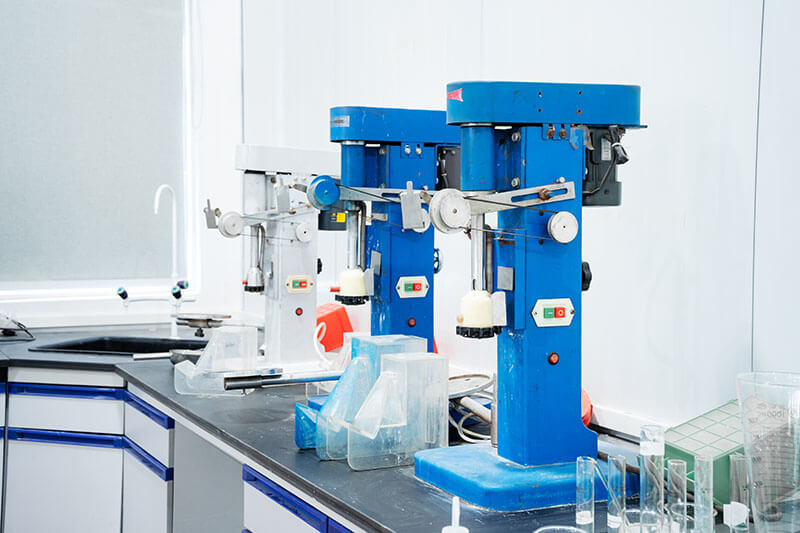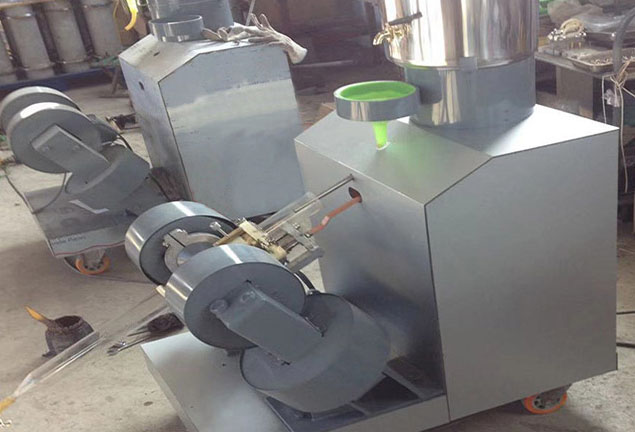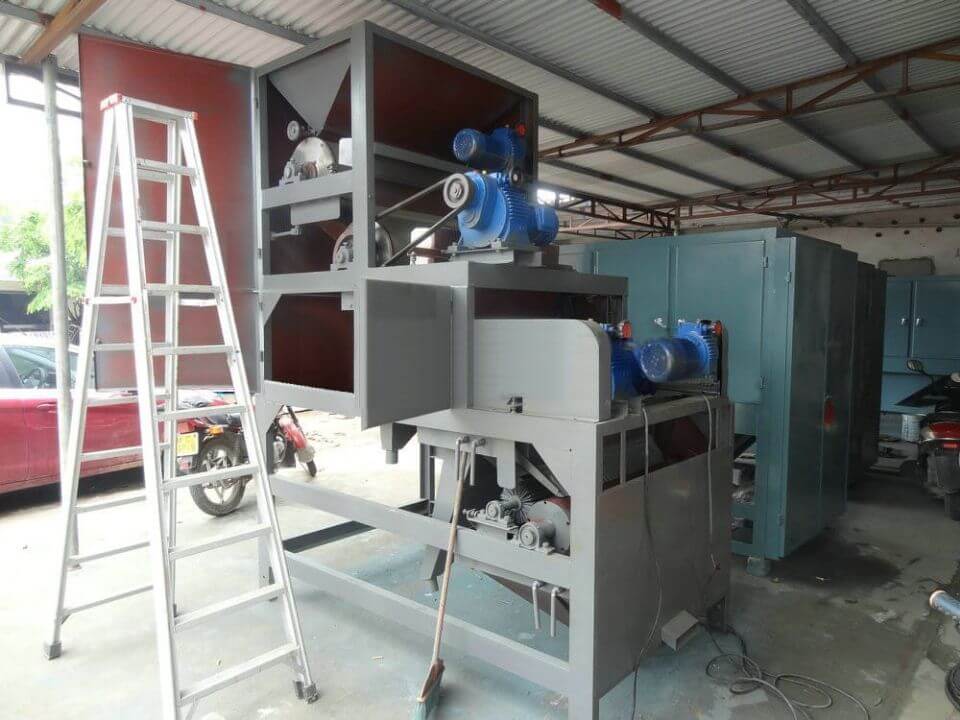Silver is a precious metal valued for its beauty and utility for centuries. However, much of the silver mined today is not found in pure deposits; instead, it is often associated with other metals, such as lead, zinc, and gold. In this blog post, we will explore the silver, the beneficiation processes used to extract it, the laboratory equipment necessary for testing, and how to conduct these tests effectively.
What is Associated Silver?
Associated Silver Defined
Associated silver refers to silver in conjunction with other minerals and metals. It typically occurs in ore deposits where silver is not the primary target but is economically recoverable as a byproduct. The common associations of silver include:
- Lead: Often found in galena (PbS), silver can be present in significant quantities.
- Zinc: Silver is frequently associated with sphalerite (ZnS), a common zinc ore.
- Gold: In some deposits, silver and gold are found together, particularly in epithermal veins, where volcanic activity has deposited minerals.
Importance of Associated Silver
Associated silver is vital for its monetary value and applications in various industries, such as electronics, jewelry, and photography. Understanding how to extract and process this metal can lead to more sustainable mining practices and increased profitability.
How to Beneficiate Associated Silver?
Beneficiation is the process of improving the economic value of ore by removing impurities and concentrating the desired minerals. The key steps in the beneficiation of associated silver include:
Ore Preparation
The first step in the beneficiation process is preparing the ore for extraction. It involves several key activities:
Crushing: Crush the ore to liberate the minerals. This step is crucial as it increases the surface area for further processing. Typically, jaw crushers break down the ore into smaller pieces.
Grinding: After crushing, the ore is ground to fine particle size to ensure effective mineral separation. Ball mills or other grinding equipment are utilized to achieve the desired particle size, ranging from a few micrometers to several hundred micrometers.
Concentration Techniques
Several methods can be employed to concentrate associated silver, depending on its association with other minerals.
a. Flotation
Overview: This is one of the most common methods for concentrating silver, especially sulfide minerals like galena and sphalerite.
Process:
- Preparation: The ground ore is mixed with water to form a slurry.
- Reagent Addition: Chemicals, known as collectors (e.g., xanthates) and frothers (e.g., pine oil), are added to the slurry. Collectors enhance the hydrophobic properties of silver-bearing minerals, while frothers create air bubbles.
- Agitation: The mixture is agitated to create a froth. Silver-bearing minerals attach to the bubbles and float to the surface.
- Froth Collection: Skim off and collect the froth containing silver concentrate.

b. Gravity Separation
Overview: This method is effective for free-milling silver ores.
Process:
- Equipment Setup: Shaking tables, jigs, and spirals are gravity separation equipment.
- Feeding Slurry: Feed the ground ore into the equipment. The differences in density allow for the separation of silver from the gangue (waste material).
- Collection: The concentrated silver is collected while discarding the waste material.
c. Chemical Leaching
Overview: When physical separation is not workable, we can use chemical leaching to extract silver.
Process:
- Leaching Agents: Add solutions like cyanide or thiourea to dissolve silver from the ore. The choice of leaching agent depends on the mineralogy of the ore.
- Leaching Tanks: The ground ore is mixed with the leaching solution in tanks, allowing the silver to dissolve.
- Recovery: Once leaching is complete, the solution contains dissolved silver, which can be recovered through electrowinning.
Final Recovery and Refining
- After concentrating the silver, the next step is to recover and refine it:
- Electrowinning: An electric current is applied to the leach solution to precipitate silver onto cathodes. This process is highly effective for recovering silver from solution.
- Refining: The collected silver may need further refining to remove impurities and achieve the desired purity level. It can involve melting and refining in furnaces or using chemical methods.
Lab Associated Silver Beneficiation Tests Equipment
Laboratory equipment is essential to conduct beneficiation tests for associated silver. Here’s a list of key equipment in the testing process:
Crushing and Grinding Equipment
- Jaw Crushers: Primary crushing of ore samples to liberate minerals.
Ball Mills: For fine grinding of mineral particles, ensuring that the material is appropriately sized for subsequent processing.
Flotation Equipment
- Flotation Cells: Carrying out the flotation process and concentrating silver-bearing minerals. These cells allow for the controlled introduction of air and reagents.
Frothers and Collectors: Chemicals that enhance the flotation process, helping to separate silver-bearing minerals from waste.
Gravity Separation Equipment
- Shaking Tables: Separating minerals based on specific gravity. These tables utilize tilt and water flow to separate denser materials.
- Concentrators: Devices such as jigs or spirals that enhance the separation process based on density differences.
Chemical Leaching Equipment
- Leaching Tanks: For mixing ore with leaching solutions. These tanks are designed to allow for optimal contact between the ore and the leaching agent.
Electrowinning Cells: Recovering silver from the leach solution by electric current.
Analytical Equipment
- Spectrometers: Measuring the concentration of silver in samples. This equipment improves the effectiveness of the beneficiation process.
Assaying Equipment: Analyze the mineral content of the ore and confirm the silver grade.
Lab Associated Silver Beneficiation Tests Equipment
Conducting beneficiation tests for associated silver involves a systematic approach to ensure accurate and reproducible results. Here’s a step-by-step guide:
Step 1: Sample Collection
Collect representative samples from the ore deposit to ensure that the testing reflects overall composition. It may involve core sampling or grab sampling.
Step 2: Sample Preparation
Crushing and Grinding: jaw crushers crush the ore and ball mills for grinding to the desired particle size.
Step 3: Conducting Flotation Tests
Prepare the Flotation Cell: Fill the flotation cell with the ground ore slurry, ensuring proper mixing.
Add Reagents: Introduce collectors and frothers to enhance the flotation process. The choice of reagents can significantly impact the silver capacity.
Agitate the Mixture: Use air bubbles to create froth and separate silver-bearing minerals from the slurry.
Collect the Froth: Skim off the froth containing concentrated silver and analyze its grade.
Step 4: Gravity Separation Tests
Set Up Equipment: Prepare shaking tables or jig machines for separation.
Feed the Slurry: Introduce the ground ore to the equipment and monitor the separation process.
Observe Separation: Collect the separated fractions and analyze their silver content to evaluate the effectiveness of the process.
Step 5: Chemical Leaching Tests
Leach the Sample: Mix the ground ore with a leaching solution in a mixing tank, ensuring thorough mixing.
Monitor Conditions: Maintain optimal conditions for leaching over time, including temperature, pH, and agitation.
Recover Silver: Use electrowinning to precipitate silver from the leach solution, then collect and analyze the recovered silver.
Step 6: Analyze Results
Spectrometers and assaying equipment determine the concentration of silver in the collected samples. Compare results from different methods to evaluate the most effective beneficiation technique, considering economic and environmental factors.
Conclusion
Beneficiating associated silver involves a combination of physical and chemical processes designed to extract this valuable metal from its ore. By understanding the characteristics of associated silver and employing the right laboratory techniques and equipment, manufacturers and researchers can significantly enhance the recovery of this precious metal.
Whether you are a mining operation looking to optimize your processes or a researcher conducting tests, the methods outlined in this blog serve as a guide to effectively beneficiate associated silver.
JXSC lab mineral processing equipment manufacturer has more than 38 years of experience in mining processing. We provide various lab mining equipment including gravity-separating equipment for processing minerals such as gold, tin, tungsten, lead, zinc, tantalum, niobium, iron, manganese, silver, titanium-iron, etc. Lab machines include laboratory jaw crusher, hammer crusher, roller crusher, grinding equipment, lab gravity separator, screening, washing equipment, etc. Welcome to consult!





